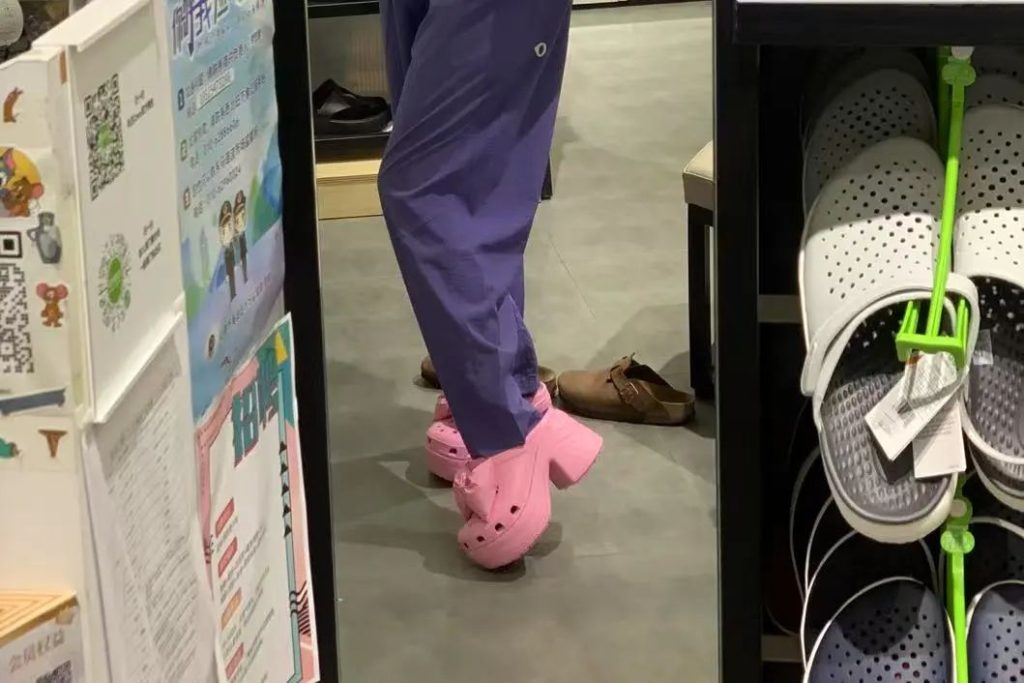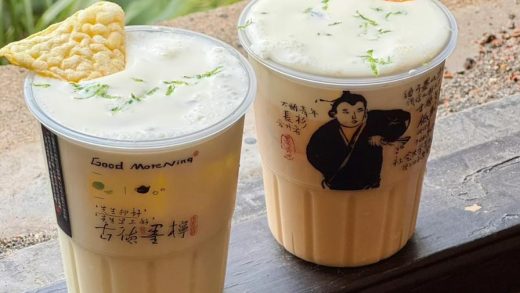
Positive Reviews: Proactively Responding to Market Changes, Demonstrating Brand Resilience through Multi – dimensional Adjustments
Facing the dilemma of declining sales and halved prices, Crocs didn’t remain passive. Instead, it demonstrated the resilience of traditional brands in responding to market fluctuations through multi – dimensional adjustments in marketing, products, and scenarios. This proactive attitude of seeking change provides a referenceable transformation model for other consumer brands facing growth bottlenecks.
Firstly, at the marketing level, Crocs continued its core strategy of “trendy collaborations + celebrity endorsements” but further expanded its coverage. From anime IPs (Pokémon, Hello Kitty) to trendy luxury brands (BAPE, Swarovski), and then to lifestyle brands (Beast), its collaboration matrix almost covers consumers of all age groups and different interest circles. In terms of celebrity collaborations, it adopted a “large – scale approach,” creating an all – year – round endorsement pipeline from top – tier to mid – generation artists, attempting to maintain brand presence through high – frequency exposure. Although this “wide – net – casting” marketing logic has been questioned for the diminishing marginal effect, it can objectively attract new customer groups for the brand. For example, collaborations with classic anime IPs may attract “otaku” consumers, and cross – border collaborations with Beast may reach the middle – class group that values lifestyle aesthetics.
Secondly, on the product side, Crocs tried to break through the inherent label of “plastic slippers” and extended towards functionality and scenario – based products. For instance, it launched laced shoe models such as the Beam Pop shoes and the Salehe Bembury Juniper sports series, attempting to enter the outdoor scenario. It also strengthened design innovation through new models like the Coral Clogs and Inmotion Clogs. Although the sales of these products have not met expectations (e.g., only over 400 pairs of the Beam Pop shoes were sold), this exploration of product boundaries is worthy of recognition. It shows that the brand realizes that relying solely on “fashion gimmicks” is not sustainable, and it must meet more segmented needs (such as anti – slip and support for outdoor scenarios) through functional upgrades and design iterations.
In addition, although the adjustment of the price strategy is regarded as a sign of the decline in brand premium, it also implies a positive signal of market rationalization. In the past few years, Crocs sold “plastic slippers” for nearly a thousand yuan thanks to its trendy attributes, and the irrational consumption where consumers paid for the “fashion label” has gradually ebbed. Now, by promoting sales to clear inventory and lowering the entry threshold (e.g., the sales of the 200 – yuan basic models exceeded 300,000 pairs), it can attract price – sensitive users and maintain market share through “trading price for volume,” avoiding user loss due to high prices. This adjustment is essentially the brand’s return from being a “luxury – like” product to a “mass consumer product,” which conforms to the long – term trend of “de – foaming” in the consumer market.
Negative Reviews: Lagging in Product Strength and Trend Capture, the Brand Moat Faces the Risk of Collapse
Although Crocs has made active adjustments, the core contradictions of declining sales and halved prices remain unsolved. The problems exposed behind it, such as weak product innovation, lagging trend capture, and a weak brand moat, may accelerate the fading of the brand’s “fashion top – tier” halo if not corrected in time.
Firstly, the core shortcoming of product strength has not been overcome, leading to confusion in consumers’ value perception. The core material of Crocs, Croslite™ resin, features “lightweight” and “easy to clean,” but it has long been criticized for its poor comfort (such as rubbing feet and being bulky) and quality (such as rough workmanship and asymmetry between left and right feet). Even its主推 “Whale” series has sparked a lot of negative discussions on social platforms due to the “ankle – spraining” problem. More importantly, after consumers lost their fascination with the “fashion attribute,” Crocs failed to build new product barriers through technological upgrades (such as GORE – TEX fabric and shock – absorbing soles for outdoor shoes) or functional innovation (such as waterproof and breathable features). Instead, it became path – dependent on “shoe charms and collaboration models.” This “emphasis on marketing, neglect of products” strategy ultimately made consumers think that “plastic slippers costing hundreds of yuan are not worth it,” and the brand premium lost its support.
Secondly, the lag in trend capture has led to missed new growth opportunities. Crocs became popular in the previous round thanks to the “dopamine dressing” trend, but it failed to anticipate the rise of the “old money style” and “outdoor style.” The “old money style” emphasizes natural materials and texture, which is contrary to the “plastic feel” of Crocs. The outdoor style requires professional functions (such as anti – slip and support), but the thick – sole design and basic material of Crocs can hardly meet these requirements. In contrast, competitors such as Birkenstock (genuine leather cork sole), Adidas Samba (German training shoes), and Salomon (professional outdoor shoes) have accurately targeted new trends and seized market share. Although Crocs tried to launch outdoor laced shoe models, the design still couldn’t get rid of the heaviness of “clogs” and failed to truly meet the functional needs of the outdoor scenario, resulting in “following the trend” but not “following it accurately.”
Moreover, excessive reliance on marketing has led to brand fatigue, and the impact of alternative products has exposed the weakness of the brand moat. In the past few years, Crocs maintained its popularity through high – frequency collaborations and celebrity endorsements, but the marginal effect of this “traffic – driven” model is diminishing. Consumers are losing their freshness for “collaboration models” and turning their attention to the value of the product itself. Meanwhile, brands like Nike, Adidas, and Skechers have entered the market with better designs (such as the streamlined Nike “Quicksand” clogs) and lower prices (Skechers’ 200 – yuan clogs), and the “dozens – of – yuan alternative products” on platforms like Pinduoduo have directly diverted users with their “cost – effectiveness.” Crocs neither established irreplaceability through patented technology or unique design nor strengthened user loyalty through brand culture (such as the emotional value of classic models). Eventually, it was caught in a passive position between “high prices” and “alternative products.”
Advice for Entrepreneurs: Insights into the Long – term Survival Rules of Consumer Brands from Crocs’ Ups and Downs
The case of Crocs provides multi – dimensional inspiration for entrepreneurs, especially in how consumer brands can respond to trend changes and build core competitiveness. The following suggestions are worth considering:
-
Product strength is the “ballast stone” of a brand. Avoid falling into the “marketing dependence syndrome.”
The dilemma of Crocs is essentially the result of an imbalance between “product strength” and “marketing strength.” Entrepreneurs need to be clear that marketing can create short – term popularity, but retaining users in the long run must rely on the value of the product itself. Whether it is functional innovation (such as high – tech fabrics for outdoor shoes), experience optimization (such as solving the problems of rubbing feet and rough workmanship), or material upgrade (such as changing from plastic to more comfortable natural materials), continuous investment is required. Improving product strength can establish a “value consensus” among users for the brand, avoiding the loss of support due to marketing fatigue or the ebb of trends. -
Trend capture requires “prediction” rather than “following the trend.” Lay out segmented scenarios in advance.
Trend changes are the “life – and – death line” for consumer brands. However, entrepreneurs should not follow trends passively but predict trends through market research and user insights. For example, when the “dopamine dressing” is popular, they can also pay attention to the budding of the “minimalist style” and “functional style.” When the outdoor demand grows, they need to develop suitable products in advance (such as waterproof and anti – slip designs). The lesson of Crocs is that it has long iterated around the single form of “clogs” and failed to expand scenarios (such as outdoor and business casual) before the trend switched, resulting in being preempted by competitors. -
Build a “differentiated moat” to avoid falling into the “price war” trap.
The impact of alternative products has exposed the weakness of Crocs’ moat. Although its core material Croslite™ is unique, it has not formed a technological barrier. Design innovation relies on collaborations and shoe charms and lacks originality. Entrepreneurs need to establish differentiated advantages through patented technology (such as a unique shock – absorbing structure), cultural value (such as brand stories and user communities), or segmented positioning (such as “professional outdoor clogs”). For example, if Crocs can deeply integrate the characteristics of “lightweight and easy to clean” with “parent – child scenarios” and “beach vacations,” it may form a unique user perception and avoid direct competition with low – price alternative products. -
Balance “brand premium” and “user value perception” to avoid pricing disconnection.
The high price of Crocs was once accepted because of the “fashion label.” However, when the label faded, consumers’ doubts about “plastic slippers worth hundreds of yuan” emerged. Entrepreneurs need to price according to users’ real perception of product value. If the product’s functions (such as professional outdoor performance) or experience (such as extreme comfort) can support a high price, they need to convey the value through marketing. If the brand is positioned for the mass market, they need to optimize the supply chain to reduce costs and avoid user loss due to high prices. -
Pay attention to user feedback and establish a “rapid iteration” mechanism.
The long – standing quality problems of Crocs (such as rubbing feet and rough workmanship) have not been improved in time, reflecting the lag of its user feedback mechanism. Entrepreneurs need to establish a rapid response chain of “user feedback – product iteration.” They can collect users’ pain points (such as comfort and quality) through e – commerce reviews and community interactions and make targeted improvements in the next – generation products. For example, to solve the “rubbing feet” problem, they can adjust the shoe design or add linings. To address the “rough workmanship,” they can optimize the production process or strengthen quality control.
In summary, the ups and downs of Crocs are a typical case of a consumer brand that “thrives on trends and is trapped by products.” For entrepreneurs, short – term popularity can be driven by marketing, but long – term survival must return to the essence of the product. They need to meet users’ needs through continuous innovation, grasp the market direction through trend prediction, and build a moat through differentiation. Only in this way can they walk more steadily and farther in the market with changing trends and increasing competition.





